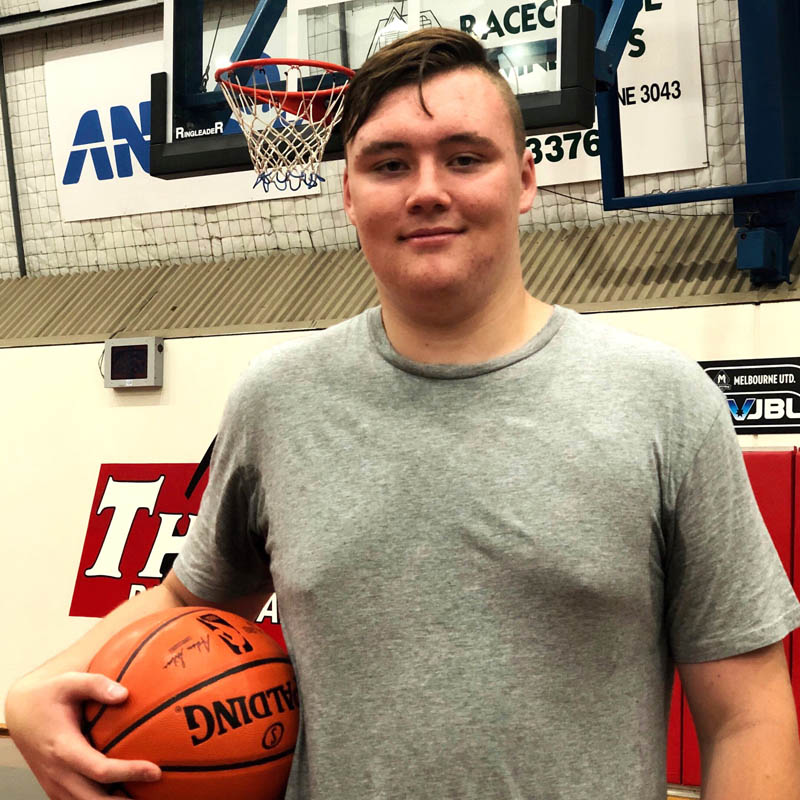Defibrillator saves a hat-trick of lives in record year for bystanders
January 17, 2019in AED, News, Operations
More lives than ever are being saved by defibrillators in public areas, according to new research.
Joshua Simpson, 15, survived a cardiac arrest thanks to early CPR and an accessible defibrillator at the basketball arena where he collapsed in December 2018.
It is the third time that the Keilor Basketball Stadium’s defibrillator has been used to save a life following previous cardiac arrests in 2012 and 2017.
The latest Victorian Ambulance Cardiac Arrest Registry (VACAR) Annual Report shows that 82 people were shocked using a publicly accessible defibrillator in 2017-2018 – two more than the previous year and the most on record.
Ambulances were also reaching cardiac arrest patients faster than ever, with a median response time of 7.6 minutes state-wide and 7.2 minutes in Greater Melbourne.
The incidence of bystanders giving CPR to people seen to collapse in cardiac arrest has increased over the past decade, from 46 per cent in 2008-2009 to 63 per cent this year.
Patients who receive bystander CPR are much more likely to be found in a shockable rhythm, the cardiac rhythm most favourable to survival.
Joshua’s mother, Jodie Simpson, rushed on to the court after seeing him collapse while playing for the Aberfeldie Jets in a Keilor Basketball Association match on 8 December 2018.
Jodie started giving him CPR while others called for an ambulance and fetched the defibrillator. Bystanders also came to Joshua’s aid, giving him CPR and a shock from the defibrillator. Joshua was conscious and breathing when paramedics arrived to continue his care soon after.
“To the people who assisted me to save my son’s life, no words can describe the gratitude I’m feeling,” she said.
“I’m just thankful that they were by my side to help me bring back Josh, and I’m glad it happened when and where it did because the stadium has a defibrillator.
“I’d like to see every child taught CPR and every sporting venue have a defibrillator.”
Josh, who is already 200cm tall and growing, described the people who came to his aid – including his mother – as brave and heroic.
“The facts are black and white: If I didn’t have CPR and the defibrillator wasn’t there I wouldn’t be here today,” he said.
“I’m very thankful for what they did and for getting me stable before the ambulance came.”
Ambulance Victoria CEO Associate Professor Tony Walker said that minutes matter in cardiac arrest, and the sooner a person receives CPR and defibrillation the better their chances of survival.
“If someone is unconscious and not breathing normally it is time to act,” Associate Professor Walker said.
“Three simple steps – call, push and shock – can save the life of someone you know and love.
“Call Triple Zero (000), push by giving CPR, and shock with an automated external defibrillator.
“Bystanders are the critical first link in the ‘chain of survival’ and can help keep patients alive before our highly-trained paramedics arrive.
“We know any CPR is better than no CPR so we encourage the community to call Triple Zero for an ambulance and start CPR immediately.
“The Triple Zero call-taker will provide instructions on how to give CPR and use a defibrillator if one is available. Automated external defibrillators (AEDs) save lives and you don’t need any training or special skills to use them.”
VACAR is one of the world’s largest registries of out-of-hospital cardiac arrests, and one of the few that routinely follows up on survivors’ quality of life to drive improvements to patient outcomes. In 2017-2018, 71 per cent of patients who were working prior to their cardiac arrest returned to work within a year.
The annual report shows Ambulance Victoria paramedics attended 6,434 out-of-hospital cardiac arrests in 2017-18 – 400 more than the previous year and the most on record. Of these, 371 were discharged from hospital to return to their loved ones.
Victoria remains one of the safest places in the world to have a cardiac arrest according to the internationally recognised Utstein measure, with a 37 per cent survival rate for Victoria and 41 per cent for Greater Melbourne compared to 32 per cent for London during the same period.
Ambulance Victoria also maintains a registry of more than 4500 public automated electronic defibrillators (AEDs) through the ambulance.vic.gov.au/register website. This includes the defibrillator at Keilor Basketball Stadium, managed by Brimbank City Council.
The locations of AEDs are fed into the Triple Zero system so that call takers will know if a defibrillator registered to a business, organisation or individual is available at the address of a cardiac arrest.
Registered medical professionals and qualified first-aiders subscribed to the GoodSAM app will also receive an alert when a cardiac arrest is happening nearby and be notified of their nearest AED.
Background
A cardiac arrest occurs when a person’s heart suddenly stops beating. A person in cardiac arrest will collapse and stop breathing normally and should receive cardiopulmonary resuscitation (CPR) immediately.
A heart attack occurs when an area of the heart is seriously deprived of blood because of a blocked vessel. The warning signs and symptoms of a heart attack can vary from person to person but often last for at least 10 minutes and may include chest pain and shortness of breath. A heart attack can progress to a cardiac arrest.
The chain of survival is an internationally recognised initiative aimed at maximising survival following out-of-hospital process. The four key links in the chain involve correct identification and early access to help, early CPR, early defibrillation and early access to advanced life support.

